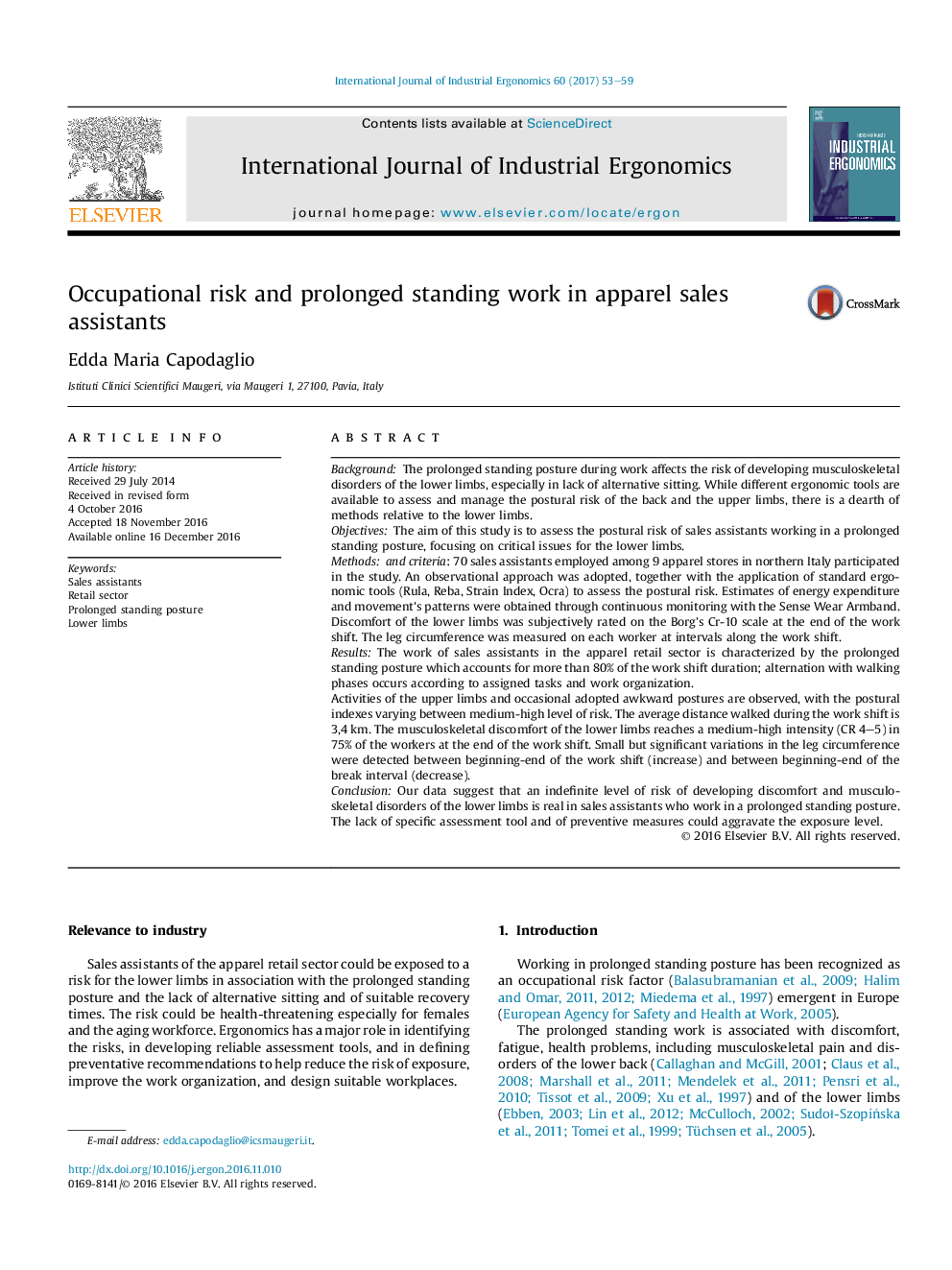| Article ID | Journal | Published Year | Pages | File Type |
|---|---|---|---|---|
| 5123684 | International Journal of Industrial Ergonomics | 2017 | 7 Pages |
â¢The sales assistants' work is characterized by the prolonged standing posture for more than 80% of the work shift duration.â¢The discomfort of the lower limbs reaches a medium-high intensity in 75% of the workers at the end of the work shift.â¢Leg circumference significantly increased between beginning-end of the work shift and decreased during the break interval.â¢Prolonged fixed postures without proper rest could long-term lead to major pathologies affecting the lower limbs.
BackgroundThe prolonged standing posture during work affects the risk of developing musculoskeletal disorders of the lower limbs, especially in lack of alternative sitting. While different ergonomic tools are available to assess and manage the postural risk of the back and the upper limbs, there is a dearth of methods relative to the lower limbs.ObjectivesThe aim of this study is to assess the postural risk of sales assistants working in a prolonged standing posture, focusing on critical issues for the lower limbs.Methodsand criteria: 70 sales assistants employed among 9 apparel stores in northern Italy participated in the study. An observational approach was adopted, together with the application of standard ergonomic tools (Rula, Reba, Strain Index, Ocra) to assess the postural risk. Estimates of energy expenditure and movement's patterns were obtained through continuous monitoring with the Sense Wear Armband. Discomfort of the lower limbs was subjectively rated on the Borg's Cr-10 scale at the end of the work shift. The leg circumference was measured on each worker at intervals along the work shift.ResultsThe work of sales assistants in the apparel retail sector is characterized by the prolonged standing posture which accounts for more than 80% of the work shift duration; alternation with walking phases occurs according to assigned tasks and work organization.Activities of the upper limbs and occasional adopted awkward postures are observed, with the postural indexes varying between medium-high level of risk. The average distance walked during the work shift is 3,4Â km. The musculoskeletal discomfort of the lower limbs reaches a medium-high intensity (CR 4-5) in 75% of the workers at the end of the work shift. Small but significant variations in the leg circumference were detected between beginning-end of the work shift (increase) and between beginning-end of the break interval (decrease).ConclusionOur data suggest that an indefinite level of risk of developing discomfort and musculoskeletal disorders of the lower limbs is real in sales assistants who work in a prolonged standing posture. The lack of specific assessment tool and of preventive measures could aggravate the exposure level.
